(685 products available)

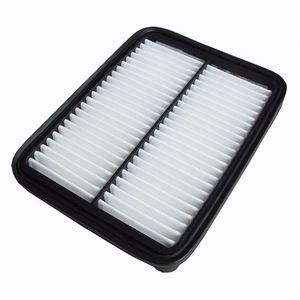

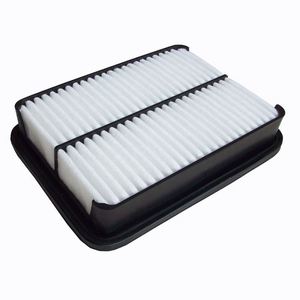
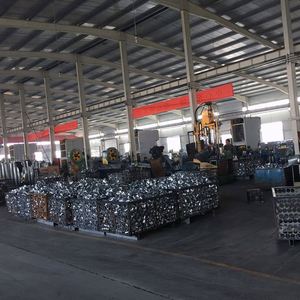














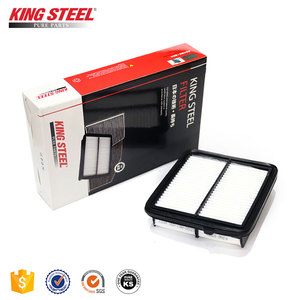

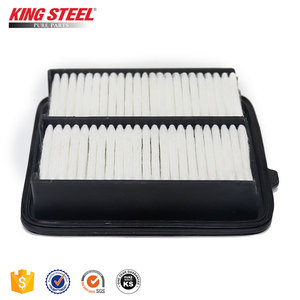



























































 Ready to Ship
Ready to Ship





 Ready to Ship
Ready to Ship





 Ready to Ship
Ready to Ship










































































































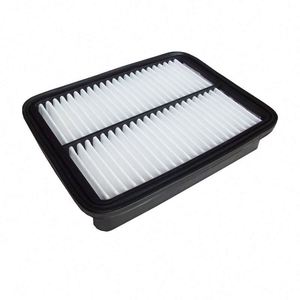
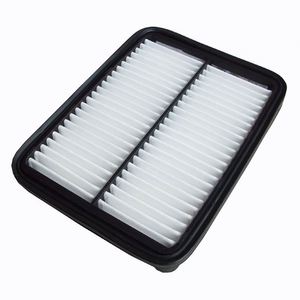

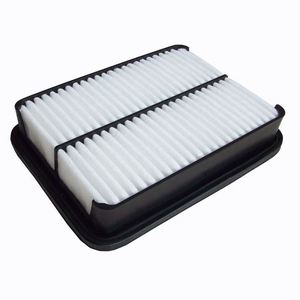


Auto foam air filters come in a range of materials, each offering unique benefits:
Polyurethane foam air filters
Polyurethane foam air filters are made from a durable material called polyurethane. This gives them great strength and the ability to handle heavy use without falling apart. They are resistant to chemicals, meaning they won't break down or lose effectiveness when exposed to substances like oil or gasoline. Polyurethane foam filters excel in filtering out small particles. They stop dirt, dust, and other tiny debris from entering the engine while allowing air to pass through easily. This ensures that the engine gets clean air without any blockages. Their strong construction and dependable filtering make them popular choices for reliable performance and protection.
Cellulose fiber air filters
Cellulose fiber air filters use a natural material called cellulose. Cellulose is found in plant cell walls, especially in wood and cotton. The cellulose used in these filters is carefully processed and cleaned, so it is safe and effective for filtering. These filters effectively trap dirt and particles due to the structure of cellulose fibers. The fibers create a sticky web that catches debris as air flows through, preventing it from entering sensitive engine parts. While cellulose filters provide good performance, they may need more maintenance than synthetic options. Foam air filters generally require regular cleaning and oiling to ensure optimal airflow and filtering.
Synthetic fiber air filters
Synthetic fiber air filters are made from man-made materials like polyester. Polyester is a common material used in clothing, but in filters, it is designed differently for better filtering. The use of synthetic fibers allows for precise control over properties like pore size and fiber density. This results in filters with tailored features for optimal air flow and contaminant capture. Synthetic fiber filters excel in high-performance applications. They effectively filter out small particles without significantly restricting airflow, ensuring engines receive abundant air for power output. This is crucial for high-performance engines that rely on optimal air intake for peak performance. Additionally, synthetic materials offer durability and resistance to environmental factors, ensuring consistent filtering efficiency even in demanding conditions.
Ease of cleaning
Foam air filters are designed to be cleaned easily and frequently. This characteristic makes them optimal for use in dusty and debris-prone environments. Once removed, the accumulated dust and dirt can be easily wiped away using a soft cloth.
Durability
Foam air filters are constructed with strong materials that are resistant to tearing and wear. This durability ensures that they can effectively trap debris without compromising their filtering abilities, even in demanding applications such as off-road driving.
Oil application
Foam air filters require the application of oil to trap dust and prevent airflow obstruction. The oil coating on the foam material ensures optimal filtering performance. However, it is essential to use the recommended type and amount of oil to achieve the desired results.
Pre-filter
Some foam air filters come with a pre-filter layer. This additional layer enhances the filter's performance by providing extra protection against larger particles. The pre-filter layer extends the lifespan of the primary foam material by capturing coarse debris before it reaches the main filtering surface.
Color coding
Foam air filters are available in various color-coded options. The color coding serves as a visual indicator of the filter's application or performance level. For instance, different colors may represent varying degrees of filtration efficiency suited for specific industries or environments.
Water and chemical resistance
Foam air filters exhibit resistance to water and certain chemicals, making them suitable for applications where exposure to moisture or mild chemicals is possible. This resistance ensures the filter's integrity and performance, even in challenging conditions.
Temperature tolerance
Foam air filters are designed to withstand a wide range of operating temperatures. This characteristic makes them suitable for various applications, including those requiring reliable performance in extreme heat or cold conditions. The foam material's thermal stability ensures consistent filtration efficiency, regardless of temperature fluctuations.
Compatibility with aftermarket performance upgrades
Foam air filters are often designed to be compatible with aftermarket performance upgrades. This feature is particularly advantageous for enthusiasts seeking to enhance their vehicle's performance. Foam filters, when used in conjunction with other performance upgrades, can improve airflow and filtration, resulting in increased power and efficiency.
The maintenance procedures for a foam air filter are as follows:
Wholesalers and retailers can consider the following factors when sourcing auto foam air filters for resale.
Type of foam
Consider the type of foam used in the construction of the air filters. Polyurethane foam is the most popular type because it has a good combination of strength and filtration ability. It can trap small particles without blocking airflow. Wholesalers can also find filters made of PVC foam. They are less common but can be used in applications where cost is prioritized over performance.
Consider the filtration efficiency
Different filters offer varying levels of filtration efficiency. The level depends on the construction material and the density of the foam. A denser foam has finer pores that can trap smaller particles. However, it also restricts airflow. Wholesalers should look for filters with a good balance between airflow and filtration efficiency. The filtration efficiency is usually indicated by the manufacturer's micron rating.
Application
Different vehicles have different performance requirements based on the environment and driving conditions. For example, a vehicle operating in a dusty region needs a foam air filter with high filtration efficiency to prevent dust from entering the engine. A car used for city commuting may not have stringent air quality standards. Wholesalers should stock different types of filters to meet various customer performance requirements.
Size and fitment
Wholesalers should get standard sizes of foam filters suitable for mass resale. They should also consider customizable options that allow them to meet specific customer requirements. It's also important to source filters that are easy to install without requiring complex modifications.
Durability
Foam filters are prone to wear and tear especially when exposed to harsh operating conditions. Wholesalers should examine the filters for signs of robust construction that enhance durability. For example, they can check the stitching and edge finishing.
Maintenance requirements
Foam filters require periodic cleaning to remove accumulated dirt and restore their filtration efficiency. Wholesalers should choose filters that are easy to clean. They can find models that come apart easily, saving users the hassle of cleaning them in their complete form.
Cost
As with any other product, foam air filters for cars come at different price points. Wholesalers should compare several offers and source filters that provide the best value for money. They can also look for budget-friendly options to expand their customer base.
Replacing foam air filters is an easy DIY task that requires minimal tools and materials. Here are the steps:
Materials Needed
Replacement foam air filter
Clean, dry rag
Screwdriver (depending on the vehicle)
Filter oil (if required)
Steps
1. Turn off the engine and locate the foam air filter. For most vehicles, it's housed in a plastic or metal casing that can be opened with a screwdriver or clips.
2. Open the casing and carefully remove the old foam air filter. Take care not to drop any debris into the engine.
3. Use a clean, dry rag to wipe down the inside of the air filter housing.
4. Place the new foam air filter into the housing, ensuring it fits properly. Some filters may require a thin layer of filter oil.
5. Close the air filter housing and secure it with screws or clips. Start the engine and ensure it's running smoothly.
Q1: Do foam air filters really work?
A1: Yes, foam air filters work. They help to keep the air clean that goes into an engine, which is important for how well the engine runs. Research shows that foam filters catch as many particles as paper ones, so they do the job of keeping the air clean.
Q2: How long should a foam air filter last?
A2: Foam filters can last for a long time - up to 100,000 miles or more. But to get that, they need to be cleaned and re-oiled regularly. How often depends on the driving conditions. If the driving has been on roads with a lot of dust, then clean and re-oil the filter sooner. Dusty roads mean the filter has worked harder to catch the dust, so it needs attention before the mileage mark is reached.
Q3: Is it better to use cotton or foam in the air filter?
A3: Cotton and foam materials are good choices for air filters. But research shows that properly made and maintained foam filters catch more tiny dirt particles than cotton. Foam might do a better job of protecting the engine over many miles, as long as both are cared for the same way.
Q4: Do auto foam air filters need to be replaced?
A4: The need for replacement of the auto foam air filters depends on several factors, including the quality of the filter, driving conditions, and maintenance practices. However, foam filters can last for a long time, typically up to 100,000 miles or more, with regular cleaning and re-oiling.
Q5: What are the benefits of using auto foam air filters?
A5: Auto foam air filters offer several advantages, including excellent filtration efficiency, durability, and cost-effectiveness. They can be reused and recycled, making them an environmentally friendly choice. When properly maintained, foam air filters can improve engine performance and fuel efficiency.